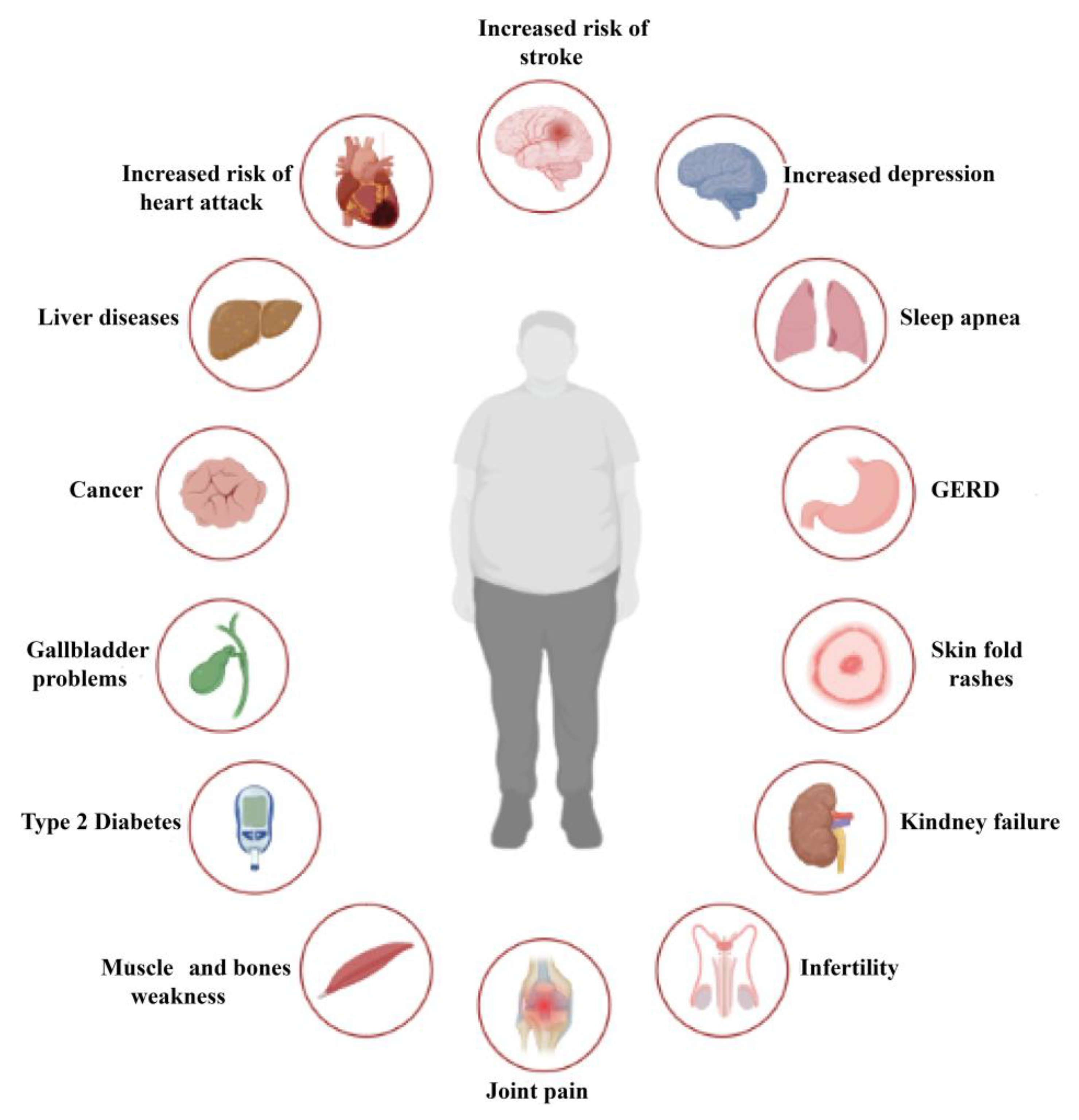 Over the past few decades, the incidence of obesity has been on the rise, and is currently a global pandemic affecting millions of people around the world. It is a complex disease with many causes including genetic, environmental and hormonal origins. Today’s article discusses medications for treatment of obesity. Keystone Infectious Disease’s Medical Director, Dr. Raghavendra Tirupathi, and medical students studying under him, Shruti Vadali, Shanthi Reddy and Avinash Javajji, discuss how these medications work, who may be a good candidate, and more.
Over the past few decades, the incidence of obesity has been on the rise, and is currently a global pandemic affecting millions of people around the world. It is a complex disease with many causes including genetic, environmental and hormonal origins. Today’s article discusses medications for treatment of obesity. Keystone Infectious Disease’s Medical Director, Dr. Raghavendra Tirupathi, and medical students studying under him, Shruti Vadali, Shanthi Reddy and Avinash Javajji, discuss how these medications work, who may be a good candidate, and more.
What is obesity?
Obesity can be defined as excessive accumulation of body fat but it is not merely a cosmetic concern. It has several far-reaching consequences like increased incidence of heart diseases, diabetes, depression, reduced quality of life and even death. In light of the recent observance of World Obesity Day on March 4, 2024, we aim to raise awareness about this matter and discuss some of the issues linked to medications for treatment of obesity.
Recent statistics reveal that over 37% of Franklin County’s population is obese and 69% of the population is overweight. Despite these alarming figures, obesity is a modifiable risk factor which means it can be reversed. Studies have shown that weight loss can dramatically lower the risk of complications associated with obesity. Conservative measures like exercise, diet and behavioral modifications are some of the initial ways to lose weight. Over the past few years, several effective anti-obesity medications have been introduced, particularly for people who fail to lose weight with conservative measures alone. One of them is Glucagon-like peptide-1 (GLP-1) receptor agonists which we will be talking about in this article and how they help combat obesity and lessen the risks that come along with it.

What are GLP-1 agonists?
GLP-1 agonists were originally used to control diabetes. Later on, studies found that they can be used to promote weight loss, as well, by reducing hunger and food intake. Recently, the Food and Drug Administration (FDA) approved the use of some GLP-1 agonists for promoting weight loss in people with obesity. Medications Semaglutide, known by the brand name Wegovy, and liraglutide (Saxenda) have been specifically approved for weight loss in obesity, in combination with lifestyle changes. Ozempic, though it has the same chemical composition as Wegovy, is approved for the treatment of diabetes. It can be prescribed off-label to promote weight loss in some cases.
How do GLP-1 agonists work?
GLP-1 is a hormone that our intestines naturally produce in response to food consumption. When we eat food, our digestive system breaks down complex carbohydrates into simple sugars which then go into the bloodstream leading to elevated blood sugar levels. GLP-1 stimulates the release of insulin in response to food consumption. Insulin, in turn, helps lower blood glucose levels. GLP-1 also suppresses glucagon release, thus helping maintain blood glucose levels.
GLP-1 agonists are drugs that mimic the action of GLP-1 hormone in our body. They help produce weight loss mainly in two ways: They delay stomach emptying, making you feel full and satisfied for longer, even with lesser amounts of food, and they send signals to the brain to reduce hunger and cravings. This helps promote a calorie deficit and, therefore, weight loss.
Are GLP-1 agonists suitable for everyone?
It is important to note that GLP-1 agonists are not for everyone. You cannot use a GLP-1 agonist if you do not fit into the criteria for the prescription and are just trying to shed a few pounds. One must have a BMI of 30 or above, or a BMI of at least 27 or above with a weight-related health condition like high blood pressure, diabetes, or high cholesterol.
In addition to this, GLP-1 agonists are not safe to take if pregnant or breastfeeding. They are also not recommended in individuals with certain conditions such as inflammatory bowel disease, pancreatitis, personal or family history of medullary thyroid cancer or multiple endocrine neoplasia. Talk to your healthcare provider to see if you are an ideal candidate for these drugs.
Can children or teenagers take GLP-1 agonists?
Most weight management medications approved by the FDA are for adults. However, two medications, Liraglutide and Semaglutide, have been approved for children aged 12 or older. Liraglutide was approved in 2020 for use alongside lifestyle changes in pediatric patients 12 or older with a body weight over 60 kg (132 lbs.) and an initial BMI over 30. Semaglutide was approved in 2022 for use alongside lifestyle changes in pediatric patients aged 12 or older with an initial BMI equal to or greater than the 95th percentile for their age and sex.
Will GLP-1 agonists help me lose weight without dieting and exercise?
GLP-1 agonists are typically prescribed to be used with a diet and exercise for weight management. While they can help with weight loss, especially in people with obesity, their effectiveness is enhanced when used alongside lifestyle changes such as a healthy diet and regular physical activity. These medications work by reducing appetite and helping you feel full, which can support weight loss efforts. However, for optimal results, it’s generally recommended to combine their use with a balanced diet and regular exercise.
What are the potential side effects of GLP-1 agonists?
As with any medication, there may be some side effects with anti-obesity drugs. The most common side effects are mild, including nausea, vomiting, bloating, constipation and diarrhea. These side effects typically lessen over time. The abdominal complaints can be alleviated by starting at lower doses and slowly increasing. Other side effects can include dizziness, mild tachycardia (increased heart rate), infections, headaches and indigestion. There are also serious side effects that can happen, but are rare, which can include: pancreatitis, medullary thyroid cancer, acute kidney injury and worsening diabetes-related retinopathy.
How long do I need to take GLP-1 agonists to see results?
GLP-1 agonists for weight loss are usually available in injectable forms which means you have to inject the drug into your body with a needle and a syringe. Wegovy is usually taken as once a week injection. For the first 16 weeks, it is taken in smaller doses, and if it is well tolerated, it can be increased to a weekly maintenance dose for as long as needed. On the other hand, Saxenda is given as a once-daily dose. These drugs are more suitable for long-term use as studies have shown that about two-thirds of people regain the lost weight once the drug is stopped. Consult your healthcare provider to discuss an effective plan for long-term weight loss.
.svg)
How much weight can I expect to lose with GLP-1 agonists?
The amount of weight you can lose with GLP-1 agonists varies based on factors like your baseline weight, diet, exercise habits and how your body reacts to the medication. Studies show these drugs can lead to significant weight loss. After a year of using them, you might lose 12% to 18% more weight than with just lifestyle changes. However, many patients regain weight after stopping these medications and hence discussion needs to happen with your healthcare provider before stopping so that other interventions including diet and exercise are optimized.
Conclusion
GLP-1 agonists have shown promise as effective treatments for obesity, especially in individuals who have not achieved sufficient weight loss with diet and exercise alone. These medications can lead to significant weight loss and offer additional benefits such as improved blood sugar control and reduced cardiovascular risk factors. However, they are typically recommended as part of a comprehensive weight management plan that includes a healthy diet and regular physical activity. As with any medication, it’s important to discuss the potential benefits and risks with your healthcare provider to determine if GLP-1 agonists are a suitable option for you.
This article contains general information only and should not be used as a substitute for professional diagnosis, treatment or care by a qualified health care provider.
For more information about Keystone Infectious Diseases, click here.




